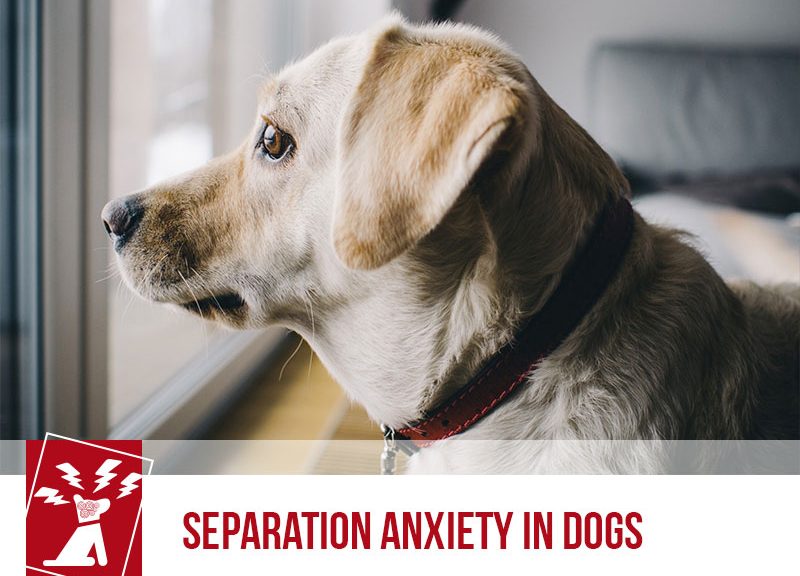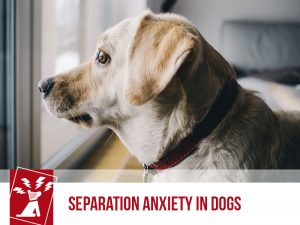Dogs suffering from separation anxiety become upset when separated from the person or persons to whom they are most attached to, usually their owners.
Separation anxiety may be driven by fear, anxiety, over attachment to the owner, and lack of appropriate stimulation or interactions. Changes in the household that are distressing to the dog can lead to separation anxiety, such as changes in the normal members of the household, changes in schedule or changing residence. Having experienced something that caused anxiety when your dog was home alone can also lead to the development of this behavioural problem.
Common signs of separation anxiety include destruction, vocalisation (whining, howling, barking), indoor elimination, and attempts to escape from an area where the dog is confined to.
Dogs with separation anxiety often start becoming anxious as the owners prepare to leave since they already know that getting the keys, putting on a coat or getting a bag means their owners are leaving the house. Dogs suffering from this behavioural issue usually show exaggerated welcoming behaviours when their owners returns as well.
There are many simple things owners can do to modify their dog’s behaviour. You can try to get your dog used to those actions that make your pet anxious, because he or she realises you’re leaving the house. Grab your keys, for example, a few times a day without actually leaving at first. Once your dog reacts normally to this, grab your keys and head for the door a few times. Then you can try leaving the house, initially for a few moments and progressively increasing the amount of time you spend outside. The idea is to gradually expose your dog to these actions in order to make them a normal part of the family routine and reduce the anxiety he or she feels towards them.
When you come home, don’t make a big fuss of the dog until he or she calms down. Do not punish your dog for anything he or she may have done while you were gone, since your dog won’t be able to associate the punishment with any specific action that may have displeased you. They realise their owner is not happy and they respond to that but, they won’t be able to make a connection between the punishment and whatever they did wrong. Please keep in mind that anxious behaviours are not the result of disobedience. Your dog is upset and trying to cope with great stress.
Providing physical and mental stimulation to your pet is a really important part of treating many behaviour problems, since it will not only keep your pet fit and healthy, it will also decrease stress and prevent boredom. Make sure your pet has enough exercise and use toys to keep him or her mentally stimulated, as this might increase his or her ability to cope while you are away.
If your pet is showing signs of separation anxiety consult your vet as medical issues can play a part in your dog’s behaviour. After medical issues have been ruled out, your vet or a qualified dog behaviourist can help you set up a strategy to manage and modify your dog’s behaviour!
Would you like to know more about dogs? Check our Canine Courses:
Canine courses

